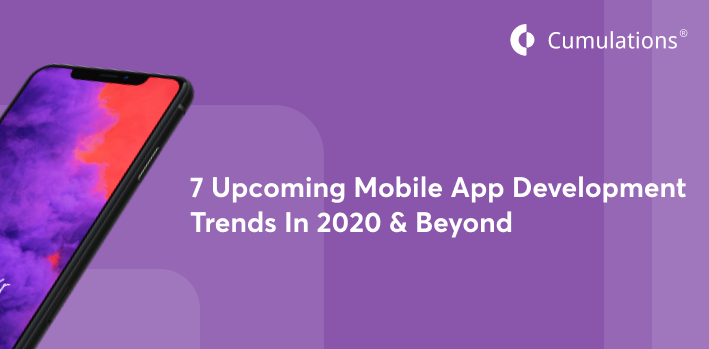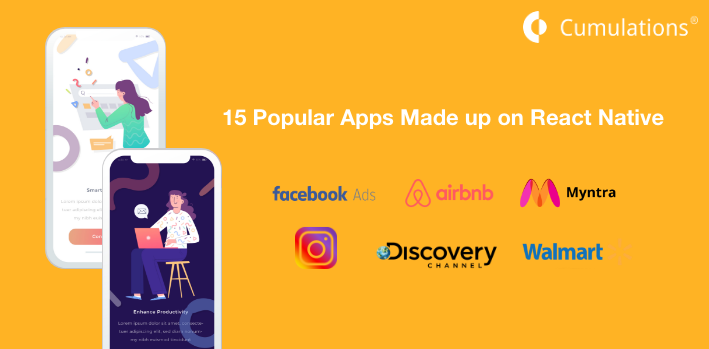
The year 2019 has brought many innovations in the field of mobile app development. By the year 2021, more than 3.8 billion people will be using smartphones, a fact which is also “confidence-boosting” for the app developers. Mobile apps will be generating revenue worth $581 billion by the year 2020 itself and innovation and upgrades may be the key for the app developers to be successful. Knowing more about the latest trends will help users know what to expect, and will also help app developers the areas in which they should be spending their efforts. Below are the latest and best mobile app development trends for the year 2020 and beyond.
Cross-Platform Flutter
Developing cross-platform apps saves time and efforts and hence frameworks and app development platforms like Google’s Flutter are quite appealing to the app developers. The flutter SDL is open-source and increases the quality of mobile apps while making it easy for the app developers to create an app that can run on both iOS and Android platforms. The building of User Interfaces becomes easy with Flutter, and apps built on the platform boast of new and exciting features as well. The reload times reduce to be in sub-seconds and hence time can be saved on the hardware, emulators, and simulators. There are no compatibility issues on the different operating systems and hence cross-platform frameworks like Flutter are quite popular mobile app development trends to gain more agility in the year 2020 and beyond. With Flutter, we can hope to build faster and well-performing apps in the future. Further, Flutter also offers easy documentation features, which reduces the burden for the app developers.
AI
AI or Artificial Intelligence is affecting all business sectors and even human life positively. Machine learning or AI is the way through which computers and machines can do tasks as humans do. AI will be used in mobile apps to a much greater extent in the year 2020 and beyond. This will not only result in better outcomes (for instance customer convenience and higher sales) but will also provide for cost-effectiveness for all parties concerned. Chatbots are also an extension of AI and these can be integrated within the apps rather easily. Chatbots provide precise answers to the users and the businesses also save a lot on their operational cost through their use. In the coming months and years, chatbots will be the virtual assistants of the app users and will be integrated well with mobile applications. Surveys reveal that more than 50% of all B2B (business-to-business) consumers prefer the CRM self-service chatbots and provide for better consumer loyalty. We can expect many new features and capabilities in apps and chatbots through AI in the coming years.
APM
The open-source HTML component and framework APM (Application Performance Management) enhances user experiences and also improves business metrics. Introduced by Google back in the year 2016, APM can be used for getting rid of the many bugs that can be deteriorating the performance of Apps. It is now being used for testing the apps and helps app developers improve the quality of the apps. APM may well provide for faster and smoother apps in the future and is one of the most important amongst all mobile app development trends for the year 2020.
React Native
React native is another new framework (consisting of the JavaScript libraries) that can be used to create the UI elements and components for the new mobile apps. Developed by Facebook, apps get cross-platform capabilities and a single code can be implemented to multiple operating systems including iOS and Android. The framework also gets live updates and hence the apps can be updated in the smartphone of the user itself. React native apps are showing exceptional retention rates and the performance-oriented framework is likely to be a remarkable app development trend in the future.
Instant Apps
The Instant App Project of Google was started in the year 2016. These apps can serve as a website and offer better functionality benefits. Users are not required to download an application for using it on their mobile, and this is the main reason why users like the convenience of instant apps. The apps take less space of a phone and also have exciting user interfaces. Instant apps have increased the conversion rates of many businesses. Further, Google also offers the option through which developers can modularize an app, and hence it is now possible for the users to use only one portion of the app. In all these cases, mobile apps turn to be more convenient for the users, and they may have no second thoughts before using an instant one.
M-Commerce Apps
M-Commerce is a way through which goods/services can be transacted upon through small gadgets and devices including tablets and smartphones. Mobile applications today, and in the future will help users pay without using their credit/debit cards. M-commerce may take the form of mobile banking, in-app purchases, virtual/online marketplaces, and others and digital wallets (including Samsung Pay and Apple Pay) are quite popular already. Apps for m-commerce and payments will surely have many new features and additions in the future and will be useful for both businesses as well as customers.
Cloud-Based Apps
App development should include cloud, which provides for better operational streamlining. Cloud and its use will help developers and businesses save on equipment costs, and hosting expenditures will also be reduced. Cloud and its use in app development will provide for better employee productivity and collaboration as well, in areas where IoT is relevant.
Mobile apps and their development may also gain through technologies including Blockchain, which can be one of the important mobile app development bangalore trends for the year 2020 and beyond. App security and features related are also important for regulators and users alike. We can hence expect that future apps will be more secure and will offer more features and capabilities that could make life more convenient and productive for all concerned. Mobile App Future trends are exciting for all of us, and we can look forward to a bright and useful web and app future.


 +91-984-5825982 | +91-996-4689921
+91-984-5825982 | +91-996-4689921 sales@cumulations.com
sales@cumulations.com Send your requirement
Send your requirement 



